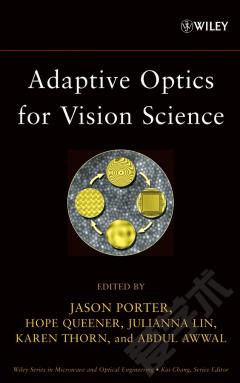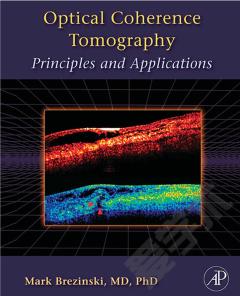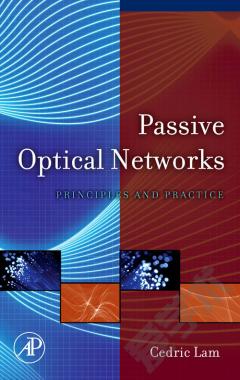Adaptive Optics for Vision Science —— Principles, Practices, Design, and Applications
----- 视觉科学自适应光学:原理、实践、设计与应用
FOREWORD. ACKNOWLEDGMENTS. CONTRIBUTORS. PART ONE: INTRODUCTION. 1. Development of Adaptive Optics in Vision Science and Ophthalmology (David R. Williams and Jason Porter). 1.1 Brief History of Aberration Correction in the Human Eye. 1.2 Applications of Ocular Adaptive Optics. PART TWO: WAVEFRONT MEASUREMENT AND CORRECTION. 2. Aberration Structure of the Human Eye (Pablo Artal, Juan M. Bueno, Antonio Guirao, and Pedro M. Prieto). 2.1 Introduction. 2.2 Location of Monochromatic Aberrations Within the Eye. 2.3 Temporal Properties of Aberrations: Accommodation and Aging. 2.4 Chromatic Aberrations. 2.5 Off-Axis Aberrations. 2.6 Statistics of Aberrations in Normal Populations. 2.7 Effects of Polarization and Scatter. 3. Wavefront Sensing and Diagnostic Uses (Geunyoung Yoon). 3.1 Wavefront Sensors for the Eye. 3.2 Optimizing a Shack-Hartmann Wavefront Sensor. 3.3 Calibration of a Wavefront Sensor. 3.4 Summary. 4. Wavefront Correctors for Vision Science (Nathan Doble and Donald T. Miller). 4.1 Introduction. 4.2 Principal Components of an AO System. 4.3 Wavefront Correctors. 4.4 Wavefront Correctors Used in Vision Science. 4.5 Performance Predictions for Various Types of Wavefront Correctors. 4.6 Summary and Conclusion. 5. Control Algorithms (Li Chen). 5.1 Introduction. 5.2 Confi guration of Lenslets and Actuators. 5.3 Infl uence Function Measurement. 5.4 Spatial Control Command of the Wavefront Corrector. 5.5 Temporal Control Command of the Wavefront Corrector. 6. Adaptive Optics Software for Vision Research (Ben Singer). 6.1 Introduction. 6.3 Measuring Wavefront Slope. 6.4 Aberration Recovery. 6.5 Correcting Aberrations. 6.6 Application-Dependent Considerations. 6.7 Conclusion. 7. Adaptive Optics System Assembly and Integration (Brian J. Bauman and Stephen K. Eisenbies). 7.1 Introduction. 7.2 First-Order Optics of the AO System. 7.3 Optical Alignment. 7.4 AO System Integration. 8. System Performance Characterization (Marcos A. van Dam). 8.1 Introduction. 8.2 Strehl Ratio. 8.3 Calibration Error. 8.4 Fitting Error. 8.5 Measurement and Bandwidth Error. 8.6 Addition of Wavefront Error Terms. PART THREE: RETINAL IMAGING APPLICATIONS. 9. Fundamental Properties of the Retina (Ann E. Elsner). 9.1 Shape of the Retina. 9.2 Two Blood Supplies. 9.3 Layers of the Fundus. 9.4 Spectra. 9.5 Light Scattering. 9.6 Polarization. 9.7 Contrast from Directly Backscattered or Multiply Scattered Light. 9.8 Summary. 10. Strategies for High-Resolution Retinal Imaging (Austin Roorda, Donald T. Miller, and Julian Christou). 10.1 Introduction. 10.2 Conventional Imaging. 10.3 Scanning Laser Imaging. 10.4 OCT Ophthalmoscope. 10.5 Common Issues for all AO Imaging Systems. 10.6 Image Postprocessing. PART FOUR: VISION CORRECTION APPLICATIONS. 11. Customized Vision Correction Devices (Ian Cox). 11.1 Contact Lenses. 11.2 Intraocular Lenses. 12. Customized Corneal Ablation (Scott M. MacRae). 12.1 Introduction. 12.2 Basics of Laser Refractive Surgery. 12.3 Forms of Customization. 12.4 The Excimer Laser Treatment. 12.5 Biomechanics and Variable Ablation Rate. 12.6 Effect of the LASIK Flap. 12.7 Wavefront Technology and Higher Order Aberration Correction. 12.8 Clinical Results of Excimer Laser Ablation. 12.9 Summary. 13. From Wavefronts To Refractions (Larry N. Thibos). 13.1 Basic Terminology. 13.2 Goal of Refraction. 13.3 Methods for Estimating the Monochromatic Refraction from an Aberration Map. 13.4 Ocular Chromatic Aberration and the Polychromatic Refraction. 13.5 Experimental Evaluation of Proposed Refraction Methods. 14. Visual Psychophysics With Adaptive Optics (Joseph L. Hardy, Peter B. Delahunt, and John S. Werner). 14.1 Psychophysical Functions. 14.2 Psychophysical Methods. 14.3 Generating the Visual Stimulus. 14.4 Conclusions. PART FIVE: DESIGN EXAMPLES. 15. Rochester Adaptive Optics Ophthalmoscope (Heidi Hofer, Jason Porter, Geunyoung Yoon, Li Chen, Ben Singer, and David R. Williams) 15.1 Introduction. 15.2 Optical Layout. 15.3 Control Algorithm. 15.4 Wavefront Correction Performance. 15.5 Improvement in Retinal Image Quality. 15.6 Improvement in Visual Performance. 15.7 Current System Limitations. 15.8 Conclusion. 16. Design of an Adaptive Optics Scanning Laser Ophthalmoscope (Krishnakumar Venkateswaran, Fernando Romero-Borja, and Austin Roorda). 16.1 Introduction. 16.2 Light Delivery. 16.3 Raster Scanning. 16.4 Adaptive Optics in the SLO. 16.5 Optical Layout for the AOSLO. 16.6 Image Acquisition. 16.7 Software Interface for the AOSLO. 16.8 Calibration and Testing. 16.9 AO Performance Results. 16.10 Imaging Results. 16.11 Discussions on Improving Performance of the AOSLO. 17. Indiana University AO-OCT System (Yan Zhang, Jungtae Rha, Ravi S. Jonnal, and Donald T. Miller). 17.1 Introduction. 17.2 Description of the System. 17.3 Experimental Procedures. 17.4 AO Performance. 17.5 Example Results with AO Conventional Flood- Illuminated Imaging. 17.6 Example Results With AO Parallel SD-OCT Imaging. 17.7 Conclusion. 18. Design and Testing of A Liquid Crystal Adaptive OpticsPhoropter (Abdul Awwal and Scot Olivier). 18.1 Introduction. 18.2 Wavefront Sensor Selection. 18.3 Beacon Selection: Size and Power, SLD versus Laser Diode. 18.4 Wavefront Corrector Selection. 18.5 Wavefront Reconstruction and Control. 18.6 Software Interface. 18.7 AO Assembly, Integration, and Troubleshooting. 18.8 System Performance, Testing Procedures, and Calibration. 18.9 Results from Human Subjects. 18.10 Discussion. 18.11 Summary. APPENDIX A: OPTICAL SOCIETY OF AMERICA'S STANDARDS FOR REPORTING OPTICAL ABERRATIONS. GLOSSARY. SYMBOL TABLE. INDEX.
{{comment.content}}








 京公网安备 11010802027623号
京公网安备 11010802027623号